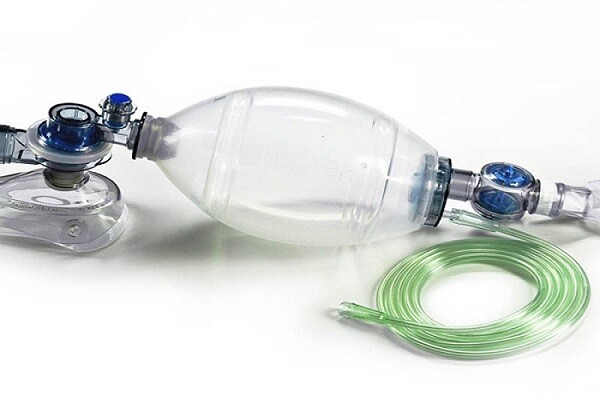Understanding Spectrophotometers : Key Components, Applications
 |
| Spectrophotometers |
Spectrophotometers are laboratory instruments that are
used across various scientific fields for quantitative analysis of samples. In
this article, we delve deeper into understanding what spectrophotometers are,
how they work and their various applications.
What is a Spectrophotometer?
A Spectrophotometer
is an analytical instrument that measures the amount of light absorbed by a
sample at various wavelengths typically across the visible, ultraviolet, or
infrared regions of the electromagnetic spectrum. It works on the principle
that different compounds interact with light differently based on their
molecular structure and composition. When light of a specific wavelength is
passed through a sample, some of the wavelengths are absorbed while others are
allowed to pass through. The spectrophotometer then measures the amount of
light that passes through versus the amount that is absorbed.
Key Components
A typical spectrophotometer contains the following key components:
- Light source: It emits either visible, ultraviolet or infrared light
depending on the type of spectrophotometer. Common sources include tungsten
lamps, hydrogen lamps, deuterium lamps and light emitting diodes.
- Monochromator: It allows only light of specific single wavelengths to pass
through and eliminates all other wavelengths. Common types used are prism and
diffraction grating monochromators.
- Sample holder: It holds the sample solution or solid in the path of the light
beam. Depending on the design it can hold cuvettes, cells or plates.
- Detector: It measures the intensity of light after it passes through the
sample. Common detectors include photodiodes, photomultiplier tubes and
charge-coupled devices.
- Processor: It analyzes the light absorption data obtained from the detector
and calculates parameters like concentration, absorbance, transmittance etc.
How it Works
The basic working involves passing light of a specific wavelength from the
light source, through the monochromator which allows only that single
wavelength to pass through. This monochromatic light then passes through the
sample held in the sample holder. The detector placed on the other side of the
sample holder measures the intensity of the transmitted light. By running this
for light of different wavelengths, an absorption spectrum for the sample is
obtained. The processor then analyzes this data to obtain quantitative results
about the sample.
Applications in Various Fields
Given below are some of the major applications of spectrophotometers across
different fields:
Chemistry - Spectrophotometers find widespread use in chemistry laboratories
for quantitative analysis of various compounds and metals in solution. Examples
include determination of concentration of colored solutions, characterization
of reactions, detection of inorganic ions like copper, iron etc.
Biochemistry - In biochemistry, they are used to quantify biomolecules like
proteins, nucleic acids, enzymes based on their specific absorption. Analysis
of blood samples, DNA/RNA samples takes place using spectrophotometers.
Pharmaceuticals - Quality control in the pharmaceutical industry involves using
spectrophotometers for assays of active pharmaceutical ingredients,
identification of impurities, dissolution testing of tablets and capsules.
Environmental analysis - Parameters like chemical oxygen demand, biochemical
oxygen demand, turbidity, toxicity etc. of water and waste samples are tested
using spectrophotometry techniques.
Food industry - Spectrophotometers help in analyzing food samples for
parameters like fat and moisture content, identification of adulterants,
checking for food colorants within permissible limits.
Biotechnology - Important applications include DNA/RNA quantification, analysis
of cell lysates, detection of labeled biomolecules during blotting techniques
like Southern, Western blots.
Nanotechnology - Spectrophotometry finds use in analyzing nanoparticles,
studying their absorption and scattering properties, determination of
dimensions, concentration etc.
Types of Spectrophotometers
Depending on design and wavelength range covered, some common types of
spectrophotometers include:
- UV-Vis Spectrophotometer - Measures absorption in both ultraviolet and
visible light range (190-750 nm approx.).
- Infrared Spectrophotometer - Analyzes samples by passing infrared light and
detecting vibrational energy absorption peaks.
- Flame Photometric Spectrophotometer - Used for analysis of metals and ions by
using flame atomization followed by light absorption detection.
- Atomic Absorption Spectrophotometer - Highly sensitive and specific for metal
trace analysis based on atomic absorption of heated atomized samples.
Spectrophotometers are indispensable analytical instruments that find widespread
applications across various scientific domains. With advances in detector
technologies and software, they are becoming more sophisticated and offer
multi-functional analysis capabilities. Going forward, miniaturization and
integration with other techniques will further enhance their roles in research
as well as industrial analysis applications.
For
more details on the report, Read- https://www.rapidwebwire.com/spectrophotometer-growth-market-size-share-analysis/
Get more insights on this topic: https://coolbio.org/monoclonal-antibody-therapeutics-revolutionizing-patient-care/



Comments
Post a Comment